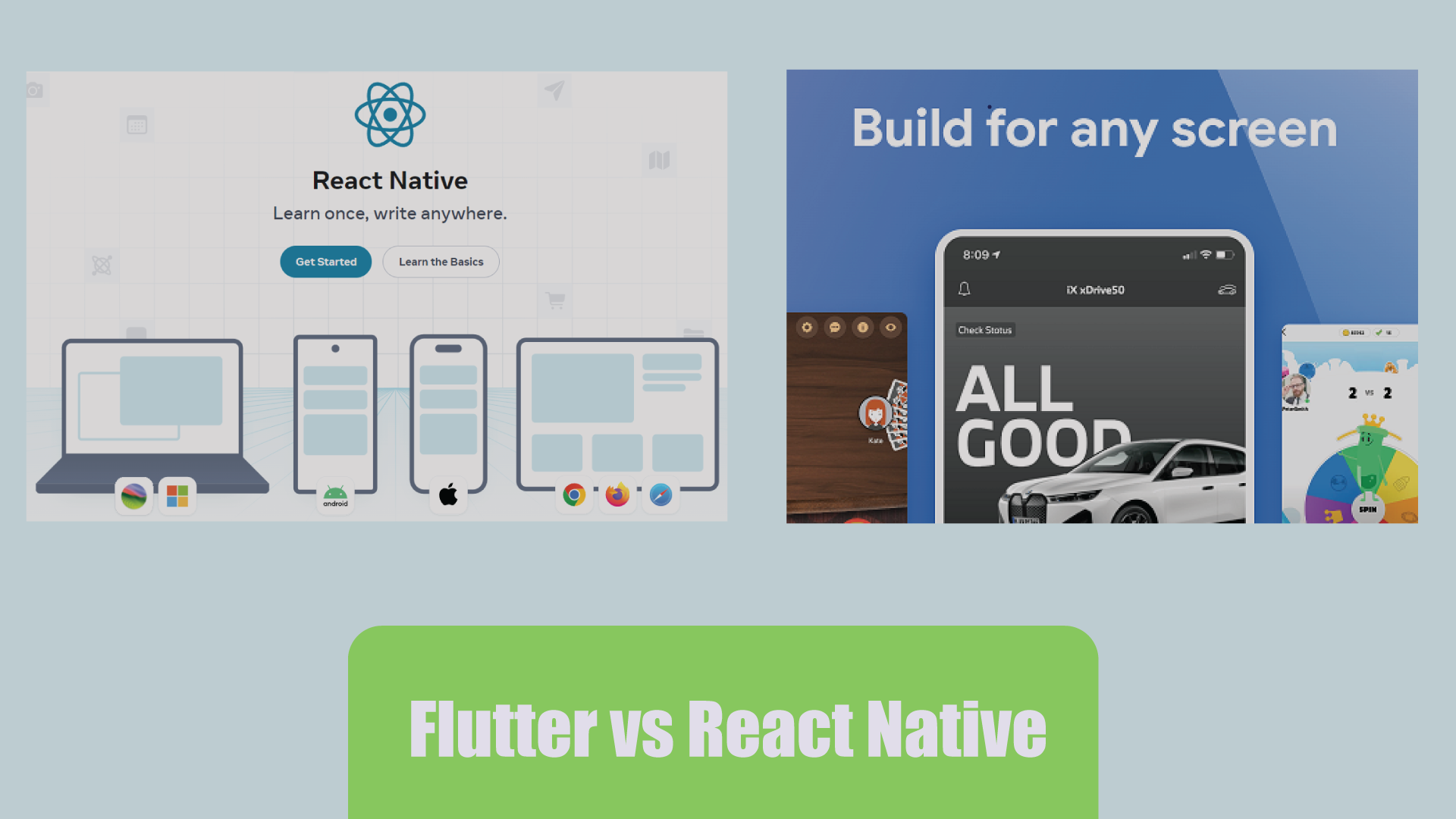The ever-growing mobile app landscape demands efficient development processes. Enter cross-platform frameworks like Flutter and React Native, allowing developers to build apps for iOS and Android using a single codebase. This translates to faster development times and reduced costs, making them highly attractive options. But with both vying for dominance, choosing the right framework can be a challenge. This blog dives into the key differences between Flutter and React Native to guide you towards the perfect fit for your next project.
Understanding the Core Differences
- Technology Stack: Flutter utilizes Dart, a Google-developed language known for its readability and speed. React Native, on the other hand, leverages JavaScript, a familiar choice for web developers.
- Rendering Approach: Flutter takes a unique approach, rendering the UI with its own high-performance widgets. React Native relies on native platform components for a more platform-specific feel.
- Performance: Both frameworks boast excellent performance, but Flutter often has a slight edge due to its ahead-of-time compilation. However, React Native can leverage native UI elements for potentially smoother interactions.
Choosing Your Champion: Factors to Consider
- Development Team Expertise: If your team has a strong JavaScript background, React Native might be a quicker adoption. For a team new to mobile development, Flutter’s comprehensive widget library can simplify the process.
- App Design Complexity: If your app requires highly customized UIs with intricate animations, Flutter’s rich widget set and control over rendering might be ideal. React Native excels when a more native look and feel is desired.
- Project Timeline and Budget: Both frameworks offer advantages in terms of development speed, but Flutter’s hot reload functionality can further accelerate the process.
Flutter vs React Native: Advantages and Considerations
- Pros: Excellent performance, rich UI capabilities, hot reload for faster development, single codebase for web, desktop, and mobile.
- Cons: Steeper learning curve for non-Dart developers, larger app size due to pre-compiled code.
- Pros: Large developer community, extensive third-party libraries, familiar JavaScript syntax, good choice for native-looking apps.
- Cons: Potential performance bottlenecks, reliance on native modules for some features, less control over UI rendering.
The Final Showdown: Flutter vs React Native
The choice between Flutter and React Native ultimately depends on your specific project requirements and development team expertise. Consider the factors mentioned above to make an informed decision. Both frameworks are constantly evolving, pushing the boundaries of cross-platform development. Whichever you choose, you’ll be well on your way to building a successful and engaging mobile app.

